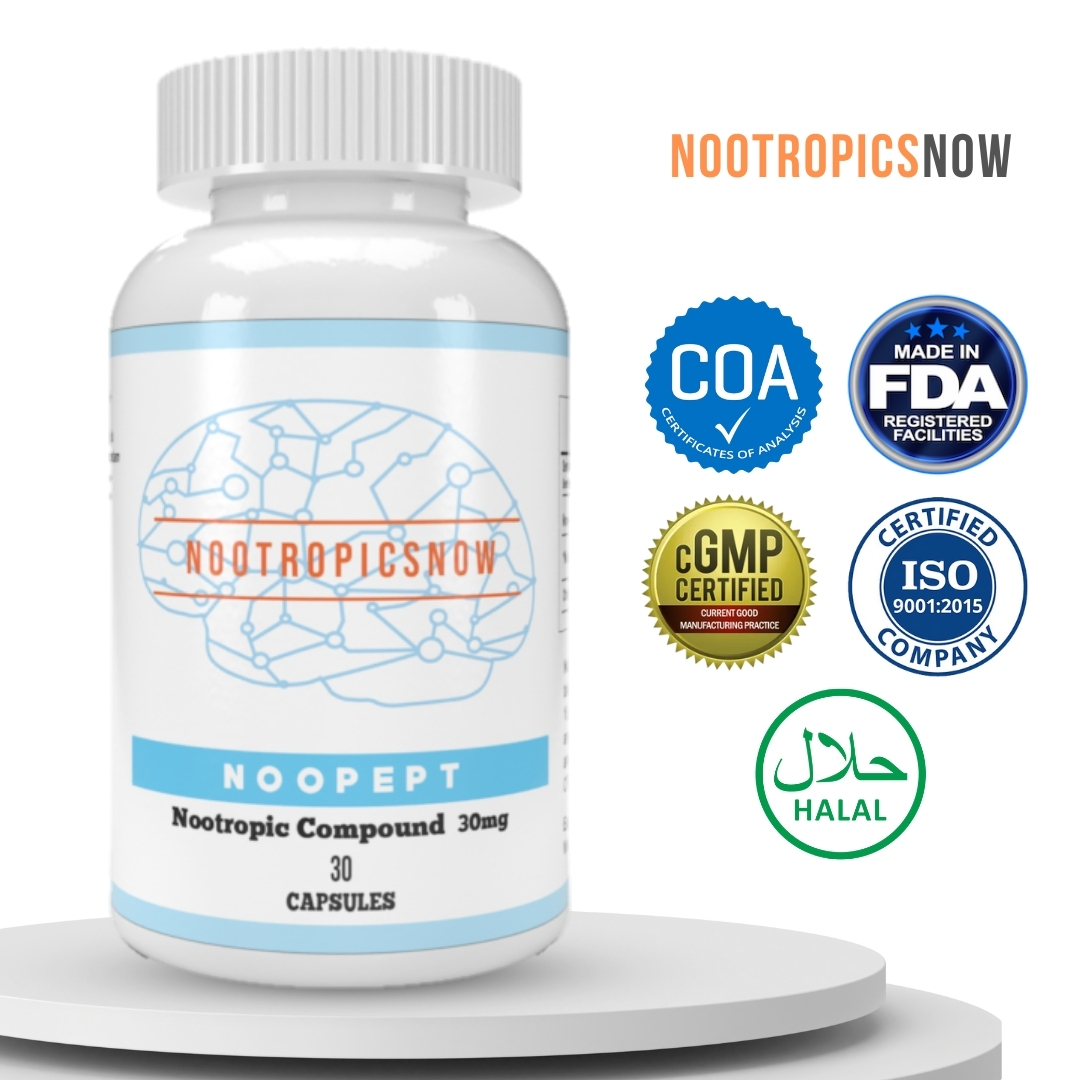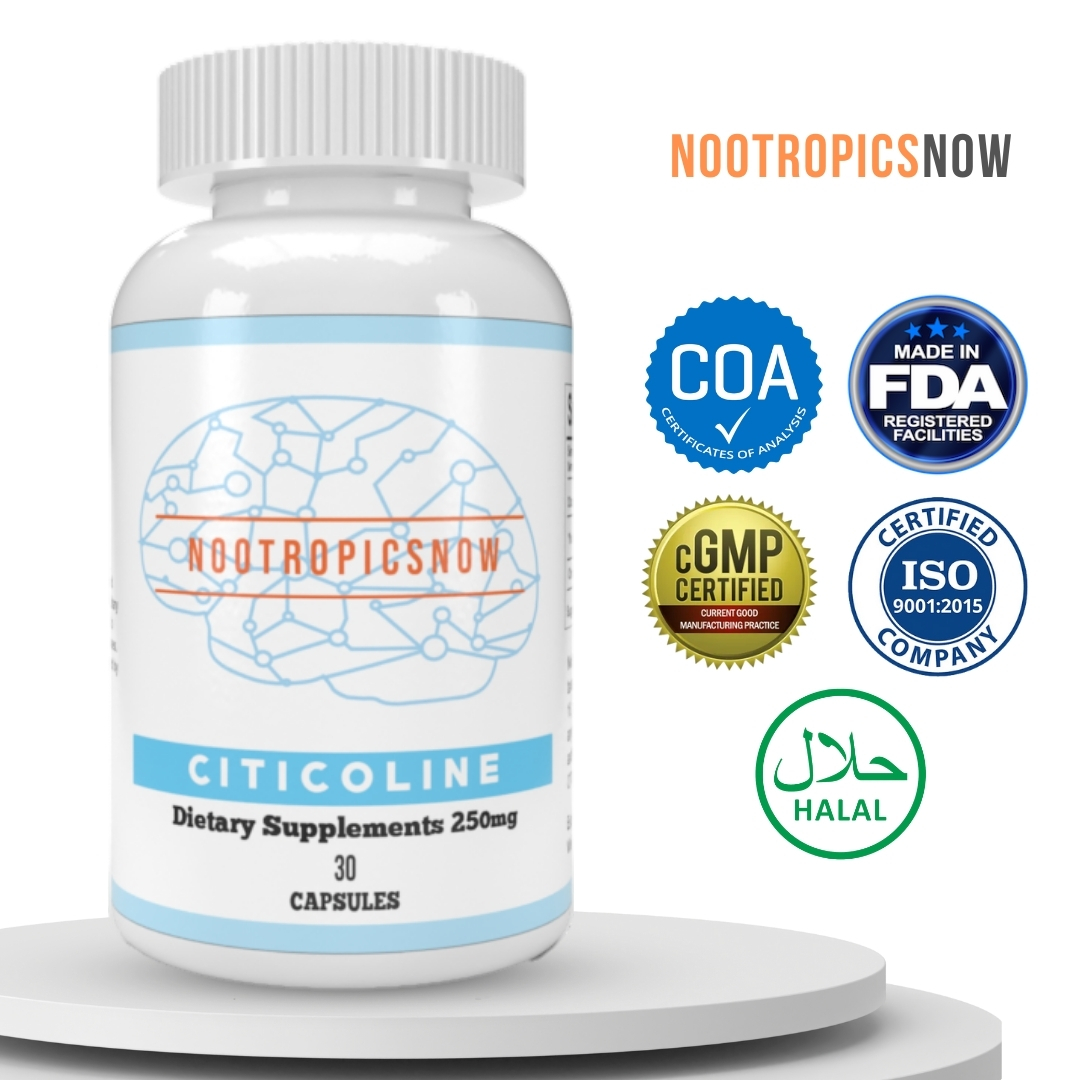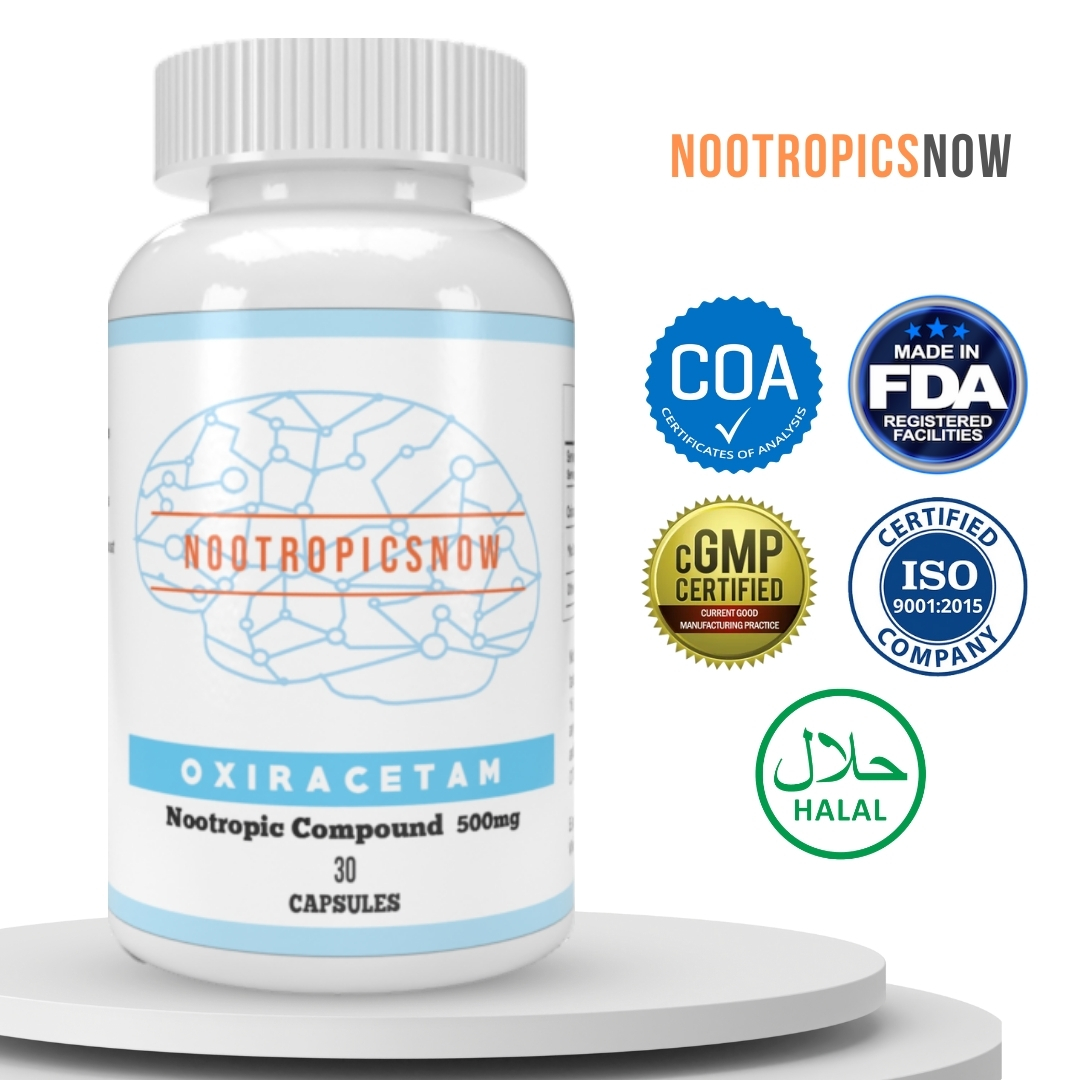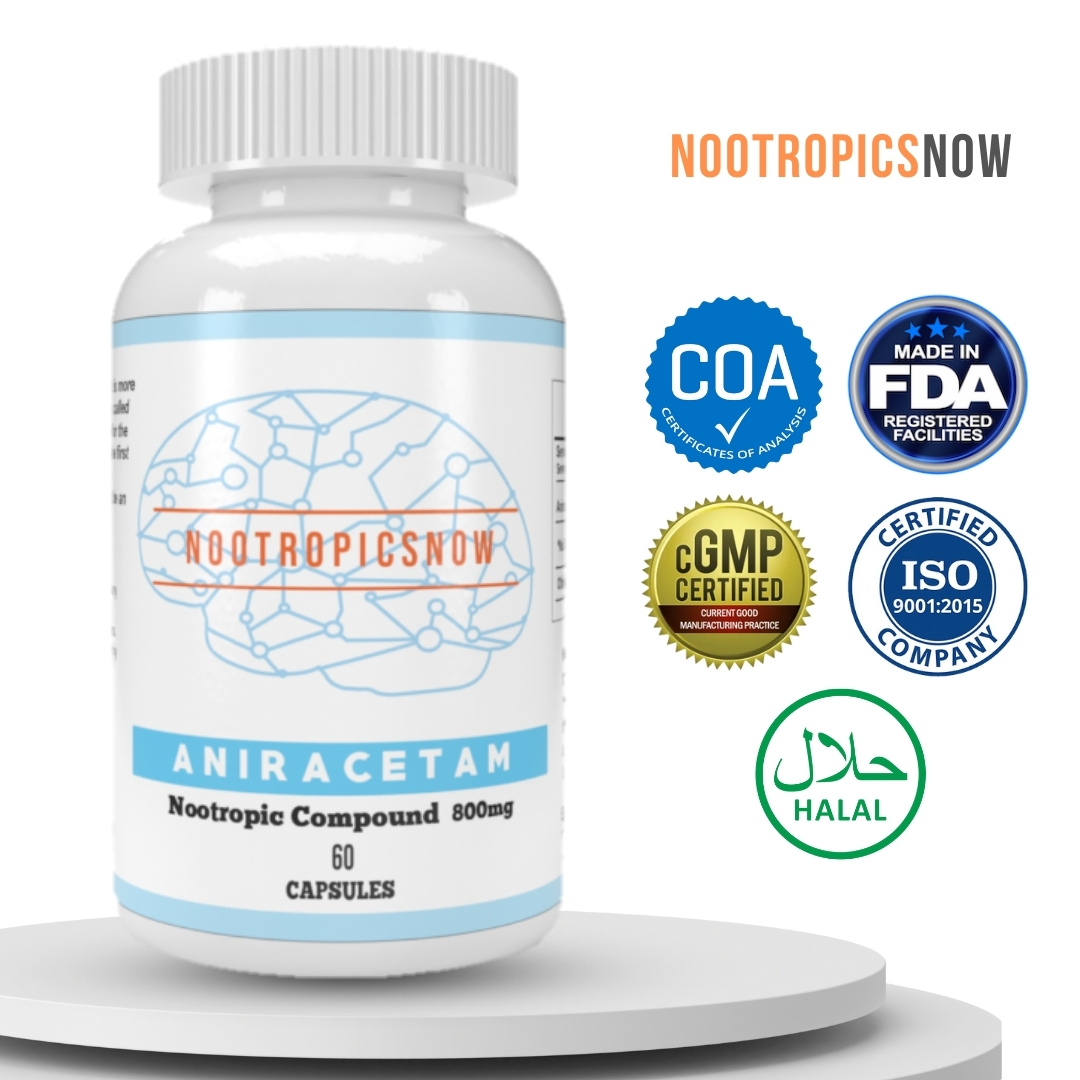Noopept: Water Soluble Benefits & Usage

Noopept Water Soluble: Unveiling Solubility, Absorption, and Best Practices

Noopept, a popular synthetic nootropic, continues to capture the interest of individuals seeking cognitive enhancement. However, its effectiveness hinges on understanding its physicochemical properties, particularly its water solubility. This detailed exploration dissects Noopept’s solubility, bioavailability, and practical usage, offering a comprehensive guide for optimizing its effects.
Understanding Noopept’s Chemical Properties
Noopept, also known chemically as N-phenylacetyl-L-prolylglycine ethyl ester, is a peptide derivative that has shown promise in improving memory and learning. Its structure influences its interaction with water, a crucial factor for absorption within the body. Consequently, while many believe it is water soluble, in reality its solubility is limited. Therefore, knowing the implications of this is important for proper dosing and maximizing benefits.
The Solubility Question: Is Noopept Truly Water Soluble?
While often discussed in the context of being “water-soluble,” the reality is more nuanced. Noopept exhibits limited solubility in water. This means it doesn’t readily dissolve in water alone to create a homogenous solution at typical dosages. Though some may be dissolved, a large portion can remain as particulate matter. Therefore, its lack of water solubility is a major consideration when trying to utilize it for cognitive enhancement.
What does Low Water Solubility mean for Absorption and Bioavailability?
The limited water solubility significantly impacts how well Noopept is absorbed into the bloodstream. The more insoluble a substance, the less readily it can cross biological membranes in the digestive tract. This, in turn, reduces its bioavailability, which is the percentage of the administered dose that reaches systemic circulation.
A lower bioavailability means that a smaller amount of Noopept is actually available to exert its cognitive effects in the brain. Therefore, administering it with careful consideration is a vital element of getting the desired effect. The method in which you choose to take the substance can either give you the desired cognitive benefits or result in an almost negligible effect.
Factors affecting Noopept Absorption
Several factors influence Noopept absorption beyond its intrinsic solubility:
How to Improve Noopept Absorption
To enhance Noopept’s absorption, consider these strategies:
Dosages and Administration Recommendations
The generally recommended dosage of Noopept ranges from 10 to 30 mg per day, typically divided into two or three doses. However, finding the optimal dosage often involves individual experimentation. Start with a low dose (e.g., 5-10 mg) and gradually increase it until the desired cognitive effects are achieved.
Sample Dosage Schedule
| Time of Day | Dose (mg) | Administration Method | Notes |
|---|---|---|---|
| :———- | :——– | :———————- | :—————————————————————– |
| Morning | 5-10 | Sublingual/Oral | Take with breakfast containing healthy fats for improved absorption. |
| Afternoon | 5-10 | Sublingual/Oral | Take with lunch or a snack that contains healthy fats. |
| Evening | N/A | N/A | Avoid taking Noopept late in the day to prevent sleep disturbances. |
Monitoring and Adjusting Doses
It’s crucial to monitor your cognitive and physical responses to Noopept. Record any changes in memory, focus, mood, and sleep quality. Adjust the dosage based on your individual needs and tolerance.
Potential Side Effects and Precautions
While generally well-tolerated, Noopept can cause side effects in some individuals. Common side effects include headaches, irritability, and insomnia. These effects are typically mild and transient, but it’s essential to be aware of them.
Rare Side Effects
Rarely, some users may experience more severe side effects, such as anxiety, confusion, and gastrointestinal issues. If these occur, discontinue use and consult a healthcare professional.
Contraindications
Noopept is contraindicated in individuals with severe liver or kidney disease. It’s also advisable to avoid Noopept if you are pregnant or breastfeeding, as its safety in these populations has not been established. Always consult your doctor if you have medical concerns or are taking prescription medications.
Stacking Noopept with Other Nootropics
“Stacking” nootropics involves combining two or more substances to achieve synergistic cognitive effects. While stacking can enhance cognitive benefits, it also increases the risk of side effects. Therefore, it should be approached with caution.
Common Nootropic Stacks with Noopept
Long Term use of Noopept
Limited research exists on the long-term effects of Noopept use. As a precautionary measure, it is advisable to cycle Noopept, taking it for several weeks or months followed by a break. This may help prevent tolerance and reduce the risk of potential side effects.
Sample Cycling Protocol
It’s crucial to listen to your body and adjust the cycling protocol based on your individual needs.
Research and Scientific Studies on Noopept
Numerous studies have investigated the effects of Noopept on cognitive function and neuroprotection. These studies have shown promise in areas such as:
Future Research Directions
Future research should focus on:
Responsible Use and Ethical Considerations
Noopept, like any nootropic substance, should be used responsibly and ethically. It’s essential to weigh the potential benefits against the risks and to use Noopept in a manner that aligns with your personal values and goals.
Ethical Considerations
Noopept vs. Other Nootropics: A Comparative Analysis
When considering nootropics, it’s essential to compare Noopept to other options and understand their respective strengths and weaknesses.
Key Nootropic Comparisons
| Nootropic | Mechanism of Action | Cognitive Benefits | Side Effects |
|---|---|---|---|
| :————- | :—————————————————————— | :——————————————————————– | :———————————————————————— |
| Noopept | Modulates neurotransmitters, enhances NGF and BDNF expression. | Memory enhancement, neuroprotection, improved focus. | Headaches, irritability, insomnia. |
| Piracetam | Modulates neurotransmitter receptors, enhances brain metabolism. | Memory enhancement, improved learning, cognitive protection. | Headaches, anxiety, insomnia. |
| Aniracetam | Modulates neurotransmitter receptors, enhances brain metabolism. | Memory enhancement, improved mood, reduced anxiety. | Headaches, nausea, insomnia. |
| Modafinil | Increases dopamine and norepinephrine levels. | Increased wakefulness, improved focus, enhanced cognitive performance. | Headaches, nausea, anxiety, insomnia. |
| Alpha GPC | Increases acetylcholine levels. | Memory enhancement, improved learning, enhanced cognitive function. | Headaches, nausea, diarrhea. |
Conclusion: Optimizing Noopept Use for Cognitive Enhancement
Noopept, while exhibiting limited water solubility, is a potent nootropic with significant potential for cognitive enhancement and neuroprotection. Understanding its solubility characteristics and implementing strategies to enhance its absorption is crucial for maximizing its benefits. Sublingual administration, co-administration with lipids, and careful dosage adjustments can optimize Noopept’s bioavailability and effectiveness. As with any nootropic, it is essential to use Noopept responsibly and ethically, prioritizing safety, well-being, and informed decision-making. By carefully monitoring your responses, experimenting with different administration methods, and staying informed about the latest research, you can harness the cognitive benefits of Noopept and unlock your full cognitive potential. Remember to consult a healthcare professional before starting any new supplement regimen.

View Product
Noopept: Understanding Its Water Solubility
Noopept, a synthetic nootropic compound, has garnered substantial interest for its potential cognitive-enhancing properties. A key aspect to understanding Noopept’s efficacy lies in its solubility. This section examines the water solubility (or lack thereof) of Noopept, its practical implications for dosage and administration, and alternative methods to improve its absorption and overall effectiveness. Correctly understanding and addressing Noopept’s solubility is crucial for optimizing its benefits.
The Chemistry of Noopept and Solubility
To appreciate the implications of Noopept’s water solubility, understanding its chemical structure is essential. Noopept, chemically known as N-phenylacetyl-L-prolylglycine ethyl ester, is a dipeptide derivative. This structure contains both polar (water-attracting) and nonpolar (water-repelling) regions.
Polar and Nonpolar Regions
The presence of the ethyl ester group and phenylacetyl group contribute to the nonpolar characteristics, which reduce water solubility. Conversely, the proline and glycine components increase the polarity, attempting to make it water soluble[1][3]. However, the overall balance leans towards nonpolarity, resulting in its limited solubility in water. This balance dictates how readily Noopept will dissolve in various solutions. This amphipathic nature (having both polar and nonpolar characteristics) affects its interaction with biological systems.
Solubility in Different Solvents
While Noopept’s water solubility is limited, it exhibits greater solubility in other solvents. For instance, it is soluble in dimethyl sulfoxide (DMSO), often used as a research solvent. DMSO is a polar aprotic solvent, meaning it can dissolve both polar and nonpolar substances. Therefore, many research experiments utilize DMSO to dissolve Noopept. Similarly, it exhibits solubility in ethanol and propylene glycol, offering alternative solvents for formulation [1][3]. However, these aren’t always ideal for consumption, underscoring the need for strategies to improve bioavailability when using practical oral administration.
Impact of Temperature on Solubility
Temperature also plays a role in solubility. Generally, increasing temperature increases the solubility of most solids in liquids. Applying gentle heat might incrementally improve Noopept’s dissolution in water; however, exceeding certain temperature levels could potentially degrade the compound. Therefore, temperature is a factor, but not a primary solution to enhance Noopept’s water solubility.
Practical Implications of Limited Water Solubility
Noopept’s limited solubility has significant implications for how it is prepared and administered. A compound that doesn’t readily dissolve in water will likely exhibit inconsistent absorption within the digestive tract. This is because absorption relies on the substance being dissolved in the aqueous environment of the gut before crossing the intestinal barrier.
Dosage Considerations
Because of its poor solubility, a standard oral dose of Noopept might not be fully absorbed. This necessitates adjusting the dosage to compensate for the reduced bioavailability. For example, some users might increase their oral dose slightly to achieve the desired cognitive effects. However, this should be done cautiously and responsibly to avoid potential side effects. The optimal dosage should always consider individual sensitivity and response.
Administration Methods
Due to the solubility limitations, several administration methods have been explored to enhance Noopept’s bioavailability. While oral administration remains the most common, sublingual (under the tongue) and intranasal (through the nose) methods are also used. Sublingual administration bypasses the first-pass metabolism in the liver, potentially improving absorption. Intranasal administration allows Noopept to directly enter the bloodstream through the nasal mucosa, further bypassing first-pass metabolism.
Food Interactions
Consuming Noopept with food, especially those containing healthy fats, can improve its absorption. Fats can help solubilize Noopept in the digestive tract, facilitating its passage through the intestinal lining. Medium-chain triglycerides (MCT oil) or omega-3 fatty acids could be beneficial in this regard. Therefore, timing Noopept intake with meals is a strategic approach.
Strategies to Enhance Noopept Absorption
Given the challenges posed by its limited water solubility, various strategies can be employed to improve Noopept’s absorption and bioavailability. These methods aim to either increase its solubility or bypass the digestive processes that reduce its effectiveness.
Lipid-Based Delivery Systems
Lipid-based delivery systems, such as liposomes or nanoemulsions, can encapsulate Noopept, improving its solubility and protecting it from degradation in the gastrointestinal tract. Liposomes are spherical vesicles composed of lipid bilayers, while nanoemulsions are stable dispersions of oil and water. These systems facilitate the transport of Noopept across cell membranes.
Cyclodextrin Complexation
Cyclodextrins are cyclic oligosaccharides that can form inclusion complexes with hydrophobic molecules. By complexing Noopept with cyclodextrins, its water solubility can be significantly enhanced. The cyclodextrin molecule encapsulates the Noopept molecule, making it more water-soluble and facilitating its absorption.
Sublingual Administration
Sublingual administration involves placing Noopept under the tongue, allowing it to dissolve and be absorbed directly into the bloodstream through the sublingual mucosa. This bypasses the first-pass metabolism in the liver, increasing the bioavailability of Noopept. However, this method might not be suitable for all users due to taste or convenience factors.
Intranasal Administration
Intranasal administration involves delivering Noopept through the nasal passages. The nasal mucosa provides a direct route for Noopept to enter the bloodstream, bypassing both the first-pass metabolism and the blood-brain barrier to a degree. This method can lead to rapid cognitive effects, but requires careful control of dosage and formulation to avoid nasal irritation.
Co-administration with Bioavailability Enhancers
One example of a bioavailability enhancer is piperine.
`markdown

View Product
`
Certain compounds can enhance the bioavailability of other substances. For example, piperine, a component of black pepper, is known to inhibit enzymes that break down drugs in the liver and intestines. Co-administering Noopept with piperine might increase its bioavailability, although further research is needed to confirm this effect specifically for Noopept.
Noopept Analogues and Solubility
Researchers are actively exploring Noopept analogues (structurally similar compounds) to improve its pharmacological properties, including solubility. Modifications to the Noopept molecule could potentially enhance its water solubility without compromising its cognitive-enhancing effects.
Structural Modifications
Modifying functional groups in the Noopept molecule can influence its solubility. For example, introducing more polar groups or altering the ester linkage could improve its interaction with water. However, these modifications must be carefully designed to maintain Noopept’s activity.
Prodrugs
Another approach involves developing prodrugs of Noopept. A prodrug is an inactive form of a drug that is converted into its active form in the body. By attaching a water-soluble moiety to Noopept, its solubility can be enhanced. Once absorbed, the prodrug is cleaved, releasing the active Noopept molecule.
Targeted Delivery Systems
Targeted delivery systems aim to deliver Noopept specifically to the brain, maximizing its therapeutic effects while minimizing systemic exposure. These systems can utilize nanoparticles or antibodies that bind to specific receptors in the brain, facilitating the transport of Noopept across the blood-brain barrier.
Safety and Precautions
While strategies to enhance Noopept absorption can be beneficial, it is crucial to prioritize safety. Always consult with a healthcare professional before making significant changes to your Noopept regimen.
Potential Side Effects
Increasing the dosage or using alternative administration methods can increase the risk of side effects. Common side effects of Noopept include headaches, irritability, and insomnia. If you experience any adverse effects, discontinue use and seek medical advice.
Drug Interactions
Noopept can interact with other medications or supplements. Therefore, it is essential to inform your healthcare provider about all the substances you are taking. This is particularly important if you are taking medications that affect the central nervous system.
Quality Control
Ensure that you are purchasing Noopept from a reputable source. Counterfeit or adulterated products can pose serious health risks. Look for third-party testing and certifications to verify the purity and potency of the product.
`markdown

View Product
`
Storage and Stability
Proper storage is crucial to maintain the stability and efficacy of Noopept. Exposure to heat, light, and moisture can degrade the compound.
Recommended Storage Conditions
Store Noopept in a cool, dry place, away from direct sunlight. It is best to store it in an airtight container to prevent moisture absorption. Refrigeration might be beneficial, especially for long-term storage.
Shelf Life
The shelf life of Noopept can vary depending on the storage conditions. Generally, it is stable for at least one year when stored properly. Check the expiration date on the product label and discard any expired Noopept.
Conclusion
Noopept’s limited water solubility presents a challenge for maximizing its cognitive-enhancing effects. However, by understanding its chemical properties and employing appropriate strategies to enhance absorption, users can optimize its bioavailability and effectiveness. Whether through lipid-based delivery systems, cyclodextrin complexation, or alternative administration methods, these approaches aim to improve Noopept’s access to the brain. Prioritizing safety and consulting with a healthcare professional are essential for a responsible and effective Noopept regimen. The future of Noopept research involves exploring new analogues and targeted delivery systems that could further enhance its therapeutic potential. Always remember to do your research, understand the potential risks and benefits, and prioritize your health and safety.







